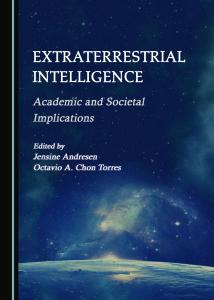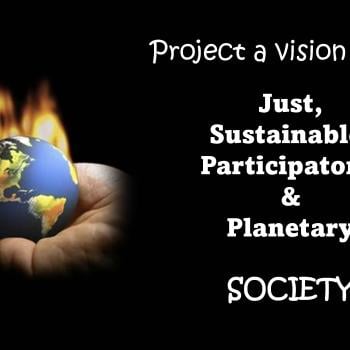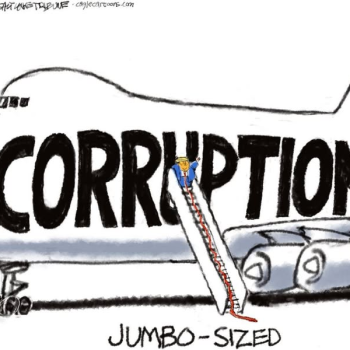Extraterrestrial intelligence (ETI) and Unidentified Aerial Phenomena (UAP) in Earth’s Skies
SR 1167
UAP crowd our skies like seagulls crowd our beaches. Once again, the U.S. Congress is holding hearings on UAP. Ufology is becoming mainstream. More. Watch the new film release by producer Caroline Cory, “A Tear in the Sky, with William Shatner. Still more. You are invited to attend virtually or in person the upcoming conference offered by the Scientific Coalition for UAP Studies (SCU), June 3-5, 2022. UAP is where it’s happening! But, we ask, what’s happening? Be there extraterrestrial intelligence here?
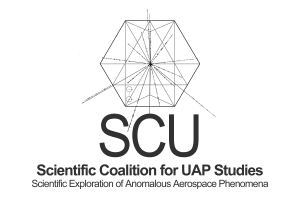 So, let’s pose questions. Are UAP alien spacecraft? After tracking unidentified objects on radar, then what? How do ETI and UAP affect our consciousness? Are UAPs subjects as well as objects? Is Earth being visited by extraterrestrial intelligence? Will we meet extraterrestrial intelligence? Are we already participating with extraterrestrial intelligence? In what follows here in this Patheos newsletter post on public theology, we will address such queries. But, we will do so as an exercise in astrotheology, a subdivision within public theology.
So, let’s pose questions. Are UAP alien spacecraft? After tracking unidentified objects on radar, then what? How do ETI and UAP affect our consciousness? Are UAPs subjects as well as objects? Is Earth being visited by extraterrestrial intelligence? Will we meet extraterrestrial intelligence? Are we already participating with extraterrestrial intelligence? In what follows here in this Patheos newsletter post on public theology, we will address such queries. But, we will do so as an exercise in astrotheology, a subdivision within public theology.
Is this just another jittery Navy film of an amorphous Tic Tac? No. It’s much more than that.
Is this just another MUFON sighting investigation? No. It’s much more than that.
Is this just another Ancient Astronaut reduction of spiritual insight to alien technology? No. It’s much more than that.
Let’s ask: how does extraterrestrial intelligence associated with UAP affect human consciousness? People close to me here in California have spent multiple late nights on a hilltop waiting for extraterrestrial visitors to communicate from their hovering craft. Now, our scientist friends want to get as far away from such paranormal reports and late-night soirées as they can. Nuts ‘n’ bolts UFO investigators want to stick to instruments and measurements. Can we connect serious science with spiritual woo woo?
Astrobiology and Ufology in Astrotheology
In a previous Patheos post, “Astrotheology as Public Theology,” I sounded fanfare for a new book, Extraterrestrial Intelligence: Academic and Societal Implications. The co-editors are Jensine Andresen and Octavio Chon Torres. Chapters include academic perspectives from quantum theory, David Bohm‘s physics, chemistry, astronomy, astrophysics, space technology, societal impact, philosophy, history, theology, religion, space ethics, medicine and integrative health, social science, and education.
What is virtually unique in this new volume is that the reader can find two fields represented: astrobiology and ufology. This is rare. When I attend summer barbeques, I dine on charcoaled burgers with my friends in astrobiology and ufology. Yet, never at the same BBQ. I must attend two BBQs if I’m going to visit with all my friends interested in extraterrestrial intelligence.
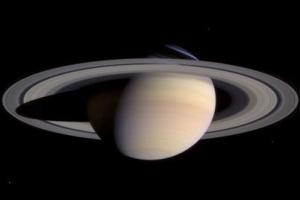 Why? Because astrobiologists believe they alone belong to the club of true scientists. Astrobiologists blackball ufologists’ applications for membership, consigning ufology to pseudoscience. The ufologists whimper at this rejection, because ufologists affirm scientific methods of research too.
Why? Because astrobiologists believe they alone belong to the club of true scientists. Astrobiologists blackball ufologists’ applications for membership, consigning ufology to pseudoscience. The ufologists whimper at this rejection, because ufologists affirm scientific methods of research too.
Ufologists further complain that the astrobiologists contradict themselves when they claim that extraterrestrial intelligence exists on exoplanets but is not coming here. Franklin Roach provides a case in point: “I think it likely that there are many extraterrestrial civilizations in our galaxy, but I think the evidence of UFO sightings does not support the hypothesis of visitations by these extraterrestrials” (Roach, 1973, p. 32).
Might a public theologian with an interest in astrotheology help sort all this out?
Is Astrobiology Scientific?
Is astrobiology scientific? Let’s ask Jill Tarter, long time director of SETI (Search for Extraterrestrial Intelligence Institute). “Astrobiology is the science that deals with the origin, evolution, distribution, and future of life in the Universe” (Tarter, 2006, p. 20). NASA adds its own Astrobiology Roadmap which asks three scientific questions (NASA, 2022).
- How does life begin and evolve?
- Does life exist elsewhere in the Universe?
- How do we search for life in the Universe?
Astrobiology may be a field of science, to be sure. But, it is a science with a religious valence. Why? Because it studies the sky and what lies beyond the sky, namely, outer space. The Beyond evokes within the human soul a sense of transcendence. The sky—and outer space beyond the sky—prompts something profound within the human psyche. The search for life elsewhere in the universe activates intense questioning: are we alone? Astrobiologists fantasize that contact with extraterrestrial intelligence might bring blessings to Earth in the form of advanced science, technology, and even world peace. Elsewhere I’ve labeled this the ETI Myth. The ETI myth is shared equally by astrobiologists and ufologists.
In light of this double valence–scientific and religious–the public theologian should make one thing clear: this religious or spiritual resonance, as powerful as it may be, does not automatically compromise the scientific rigor of NASA or SETI or other astrobiologists.
Astrobiology’s Cultural Impact
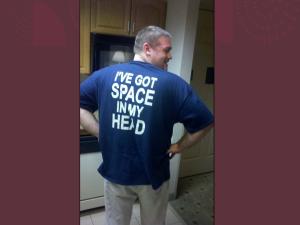 Nobel Prize winning biologist and SETI theorist Baruch Blumberg recognizes the cultural impact of this particular science: Astrobiology “raises fundamental questions not only in biology, physics and chemistry but also in philosophy, psychology, religion, theology and the way in which humans interact with their environment and each other” (Blumberg, 2011). Note how theology is on the list. The aroma rising from the grill at an astrobiologist’s barbecue spreads to sister disciplines and circulates throughout the entire culture.
Nobel Prize winning biologist and SETI theorist Baruch Blumberg recognizes the cultural impact of this particular science: Astrobiology “raises fundamental questions not only in biology, physics and chemistry but also in philosophy, psychology, religion, theology and the way in which humans interact with their environment and each other” (Blumberg, 2011). Note how theology is on the list. The aroma rising from the grill at an astrobiologist’s barbecue spreads to sister disciplines and circulates throughout the entire culture.
What about extraterrestrial intelligence? Astrobiologists enthusiastically search the galaxy. But alas, to date, they’ve found no empirical evidence that we have space neighbors. But, exclaim ufologists, look at UFOs! Here’s the evidence you’re looking for!
Ufologists feel insulted because of the unspoken astrobiologist’s motto. The motto goes like this: exoplanets are teeming with extraterrestrial intelligence; but no intelligent extraterrestrials are coming to earth in flying saucers. Ufologists complain that this motto is ideological, prejudicial, and unscientific.
Criticisms of Astrobiology
Is this a fair criticism? Not if you’re a scientist.
“Why am I a UFO agnostic?” asks astrobiologist Chris Impey rhetorically. “I think it likely that there is advanced life with technological capabilities somewhere in the universe, and maybe in our galaxy. But the way UFOs present themselves doesn’t pass the smell test” (Impey, Why Are We So Lonely?, 2022, p. 27). Physicist Carl Peterson weighs in. “Much of the UAP data that has been gathered: sightings, videos, and witness accounts are not high-quality physics data, and lack sufficient credibility and supporting evidence” (Peterson, 2022, p. 265).
Despite this dispute, some “real” scientists smell the aroma of UFOs wafting from their grills. Astophysicists and astrobiologists have recently established SCU, the Scientific Coalition for UAP Studies. SCU is sponsoring the event mentioned above.
Similarly, Harvard astronomer and founder of the Galileo Project, Abraham “Avi” Loeb, is tossing a mixed salad of scientists and humanists to research UAP. Loeb wants to employ scientific rigor to test UAP claims. “It is understandable why some people prefer not to test their beliefs, but evidence-based science teaches us that reality does not go away when you ignore it” (Loeb, 2021). Even if scientists do not test UAP claims, UAP are not going away. It is time to evaluate the evidence attached to UAP agnostically to see where the science might lead, he believes. Loeb’s new Galileo Project is unique, because he invites both astrobiologists and ufologists to his barbecue.
Space scientists receive a BBQ invitation coming from the ufologist. Silicon Valley computer scientist and indefatigable ufologist, Jacques Vallee, warms up his Weber . “Unidentified flying objects do exist. They are astounding physical anomalies that have the ability to affect the perception of time and space and the consciousness of those who come close to them. They should be seriously and calmly investigated by the full power of science” (Vallee, Revelations: Alien Contact and Human Deception, 2008, p. Kindle 3373).
Is Ufology scientific?
Over the decades, I’ve attended numerous intellectual BBQs hosted by MUFON (Mutual UFO Network). When I began with MUFON (founded in 1969) five decades ago, it was led by well-intentioned amateurs. In recent years MUFON has become increasingly professionalized. Scientists with Ph.D’s evaluate the ongoing research.
If ufology were a fresh egg sizzling in the frying pan, you could distinguish the yoke at the center from the white apron and the fringe. UFO investigators at the yoke think of themselves as scientific. They commit themselves to objective knowledge thoroughly researched and fairly weighed. Those at the yoke like to put distance between themselves and the fringe. Even so, no invitations to scientific BBQs show up in their in-box.
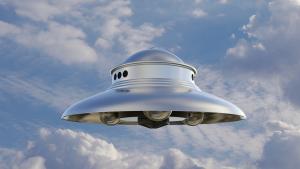 MUFON’s Scientific Method
MUFON’s Scientific Method
MUFON’s self-understanding is that it is a scientific organization. Make a visit to the MUFON website. Your eyes will fix on “the words that inspire us every day.” What are those words? We find those words in an honor frame, where MUFON dedicates itself to “The Scientific Study of UFOs for the Benefit of Humanity.” Science inspires.
MUFON investigators are well aware that their primary subject matter—sightings of Unidentified Aerial Phenomena—does not lend itself easily to scientific research. Sighting reports are anecdotal, whereas scientists routinely study natural phenomena subject to repeated experimentation. One-time events such as sighting an unidentified flying object resist repeated experimentation. Nevertheless, MUFON investigators commit themselves to the extent reasonable to careful data collection and parsimonious hypothesizing.
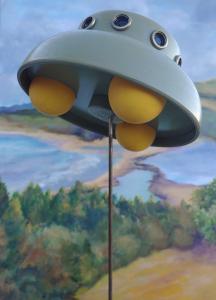 So, when reporting on sightings, MUFON investigators strive to use the scientific method. Data is collected through online reports that identify specific information that can be used to make reports as accurate as possible. The parameters collected on UFO reports include: date, time, latitude, longitude, witness report, witness background and age, UFO color/shape/brightness, and directional information. A MUFON Field Investigator then interviews the witnesses who made the report and collects additional information such as angular size, elevation, azimuth, brightness, if possible the distance to the object, and other measurable information. The Field Investigator looks for the possibility that the witness misinterpreted what was seen.
So, when reporting on sightings, MUFON investigators strive to use the scientific method. Data is collected through online reports that identify specific information that can be used to make reports as accurate as possible. The parameters collected on UFO reports include: date, time, latitude, longitude, witness report, witness background and age, UFO color/shape/brightness, and directional information. A MUFON Field Investigator then interviews the witnesses who made the report and collects additional information such as angular size, elevation, azimuth, brightness, if possible the distance to the object, and other measurable information. The Field Investigator looks for the possibility that the witness misinterpreted what was seen.
Criticisms of Ufology
Let’s ask: does this count as good science? Not from the perspective of the establishment scientist. Take Guy Consolmagno,S.J., for example. Comsolmagno directs the Vatican Observatory. “But we have no artifacts from UFOs in our labs. None. Zilch. We have nothing to test. Thus, my skepticism remains” (Consolmagno, 2014, p. 254). Ufologists should not expect an invitation to a Vatican Observatory barbecue.
Part of the puzzle is that UAP appear in various shapes, sizes, and types, suggesting that they have different purposes. Types include egg-shaped craft, cylinders, saucers, the ‘Tic Tac’ design, discs, Dropa-stone shaped crafts, diamond-shaped craft, cubes, cubes inside spheres, triangular craft, orbs, gaseous spheres. Some UAP are radio antennae shaped, even at 35,000 feet, as observed from a commercial airplane pilot. Still others are energized balls of light. Jensine Andresen uses the term, “amorphous,” for these (Andresen, 2022).
It gets still more complicated. UAP demonstrate astonishing technological capabilities such as anti-gravity, instantaneous acceleration, hypersonic velocity, low observability, travel between media such as air and water. In addition, there are low-observable characteristics at multiple radar bands, which means that U.S. radar-based engagement capabilities are ineffective. There is advanced aerodynamic performance with no visible control surfaces and no visible means to generate lift. Some UAP seem to exhibit advanced propulsion capability: after standing stationary a craft-like object then transitions to horizontal/vertical velocities far greater than any known aerial vehicle with little or no visible signature. No known air vehicles in the inventory of the U.S. or any foreign nation has such capabilities. How does the ufologist explain this panoply of phenomena?
What have we learned about Extraterrestrial Intelligence from Ufology?
In a fine historical summary of ufology accompanied by conclusions, Environmental Studies professor Michael Swords answers the question: what have 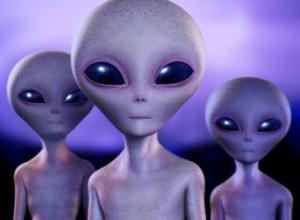 ufologists learned?
ufologists learned?
- That the phenomenon is a true, ongoing mystery, and is deserving of serious study;
- How it has happened that even good (open-minded) scientists have been thrown off the subject;
- That the “Extraterrestrial Hypothesis” (ETH) may be able to serve as a working model for what is going on but not in any simple-minded form;
- That the field is almost impossible to study in any “conservative” (physical sciences/lab-top) type of way, barring rare cases of certain “close encounters”(Swords, 2006, p. 545) .
Let’s be honest. The most intriguing is number 3: the extraterrestrial hypothesis (ETH). Like astrobiologists, ufologists ask: are we alone? But ufologists ask a question not entertained by astrobiologists: are aliens coming here? “Scientists think there may have been life on Mars,” writes University of Arizona astrobiologist, Chris Impey; “but don’t think UFOs are alien visitors” (Impey, The Living Cosmos: Our Search for Life in the Universe, 2007, p. 9). That’s the big difference.
In short, what the astrobiologists are searching for the ufologists have already found.
Is there a religious dimension to studying extraterrestrial intelligence?
As mentioned above, a religious or spiritual valence attached to studying the cosmos or searching for extraterrestrial intelligence does not in itself render the research unscientific. Even so, the public theologian will want to know more about this (Peters, 2014).
![]() According to scholar Diane Pasulka, “the UFO is considered by believers to be advanced technology. Like the Spiritualists of the nineteenth century, believers see technology as a portal or a frequency shift that allows humans to connect to other minds, human or extraterrestrial, as well as to places outside of the current understanding of space-time. Therefore, not only is the technological infrastructure the basis for widespread belief in UFOs, through media technologies and other mechanisms, but also technology itself is a sacred medium, as well as the sacred object, of this new religiosity” (Pasulka, 2019, p. 2). What is tacitly sacred is science and technology, whether terrestrial or extraterrestrial. Religious and spiritual roses are hopelessly entwined with scientific and technological vines. But, that’s another topic. The point here is that whether its ufology or astrobiology, we need to wake up and smell the science.
According to scholar Diane Pasulka, “the UFO is considered by believers to be advanced technology. Like the Spiritualists of the nineteenth century, believers see technology as a portal or a frequency shift that allows humans to connect to other minds, human or extraterrestrial, as well as to places outside of the current understanding of space-time. Therefore, not only is the technological infrastructure the basis for widespread belief in UFOs, through media technologies and other mechanisms, but also technology itself is a sacred medium, as well as the sacred object, of this new religiosity” (Pasulka, 2019, p. 2). What is tacitly sacred is science and technology, whether terrestrial or extraterrestrial. Religious and spiritual roses are hopelessly entwined with scientific and technological vines. But, that’s another topic. The point here is that whether its ufology or astrobiology, we need to wake up and smell the science.
Conclusion
This has been an exercise in astrotheology as public theology. Why might the astrotheologian be concerned about who goes to which BBQs? Because outer space is public. Because extraterrestrial intelligence is public. Because the public theologian celebrates only science at its best while eschewing pseudo-science and science-wannabees. At the same time, the astrotheologian asks both the astrobiologist and ufologist to stick to the science. Don’t practice theology without a license.
Common sense suggests that astrobiologists and ufologists at the same barbeque should dine on the same fare. Both should consider scientific rigor the measure of what is learned about UAP as well as ETI.
Famed SETI astronomer Seth Shostak seems to want to invite ufologists to his astrobiological BBQ. He grants that “the question of whether UFOs are truly interstellar spacecraft needs to be addressed by careful examination of the claims” (Shostak, 2020, p. 14). I certainly hope both the astrobiologists and ufologists will invite the public theologian to join them around the Weber.
▓
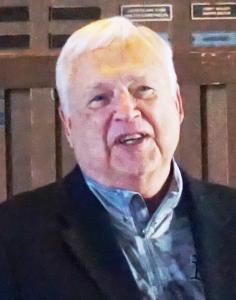 Ted Peters directs traffic at the intersection of science, religion, and ethics. Peters is an emeritus professor at the Graduate Theological Union, where he co-edits the journal, Theology and Science, on behalf of the Center for Theology and the Natural Sciences, in Berkeley, California, USA. He authored Playing God? Genetic Determinism and Human Freedom? (Routledge, 2nd ed., 2002) as well as Science, Theology, and Ethics (Ashgate 2003). Along with Martinez Hewlett, Joshua Moritz, and Robert John Russell, he co-edited, Astrotheology: Science and Theology Meet Extraterrestrial Intelligence (2018). Along with Octavio Chon Torres, Joseph Seckbach, and Russell Gordon, he co-edited, Astrobiology: Science, Ethics, and Public Policy (Scrivener 2021). He is also author of UFOs: God’s Chariots? Spirituality, Ancient Aliens, and Religious Yearnings in the Age of Extraterrestrials (Career Press New Page Books, 2014). See his website: TedsTimelyTake.com.
Ted Peters directs traffic at the intersection of science, religion, and ethics. Peters is an emeritus professor at the Graduate Theological Union, where he co-edits the journal, Theology and Science, on behalf of the Center for Theology and the Natural Sciences, in Berkeley, California, USA. He authored Playing God? Genetic Determinism and Human Freedom? (Routledge, 2nd ed., 2002) as well as Science, Theology, and Ethics (Ashgate 2003). Along with Martinez Hewlett, Joshua Moritz, and Robert John Russell, he co-edited, Astrotheology: Science and Theology Meet Extraterrestrial Intelligence (2018). Along with Octavio Chon Torres, Joseph Seckbach, and Russell Gordon, he co-edited, Astrobiology: Science, Ethics, and Public Policy (Scrivener 2021). He is also author of UFOs: God’s Chariots? Spirituality, Ancient Aliens, and Religious Yearnings in the Age of Extraterrestrials (Career Press New Page Books, 2014). See his website: TedsTimelyTake.com.
▓
References
Andresen, J. (2022). Mind of the Matter, and Matter of the Mind. In e. Jensine Andresen and Octavio Chon Torres, Extraterrestrial Intelligence: Academic and Societal Implications (pp. 281-330). Cambridge UK: Cambridge Scholars Publishing.
Blumberg, B. (2011). Astrobiology, space, and the future of discovery. Philosophical Transactions of the Royal Society A, https://doi.org/10.1098/rsta.2010.0239.
Condon, E. (1969). Final Report of the Scientific Study of Unidentified Flying Objects. New York: E P Dutton.
Consolmagno, G. a. (2014). Would You Baptize an Extraterrestrial? New York: Image.
Director of National Intelligence, U. (June 25, 2021). Preliminary Report on Unidentified Aerial Phenomena. https://www.dni.gov/index.php/newsroom/reports-publications/reports-publications-2021/item/2223-preliminary-assessment-unidentified-aerial-phenomena. .
Hynek, J. A. (1972). The UFO Experience: A Scientific Inquiry. New York: Ballantine.
Impey, C. (2007). The Living Cosmos: Our Search for Life in the Universe. New York: Random House.
Impey, C. (2022). Why Are We So Lonely? In e. Jensine Andresen and Octavio Chon Torres, Extraterrestrial Intelligence: Academic and Societal Implications (pp. 21-32). Cambridge UK: Cambridge Scholars Press.
Keyhoe, D. (1973). Aliens from Space. New York: Doubleday.
Loeb, A. (2021, January). Experimental Tests of Theology. Scientific American, pp. https://www.scientificamerican.com/article/experimental-tests-of-theology/.
NASA. (2022). Astrobiology Roadmap. https://astrobiology.nasa.gov/research/astrobiology-at-nasa/astrobiology-strategy/.
Pasulka, D. (2019). American Cosmic: UFOs, Religion, Technology. Oxford: Oxford University Press.
Peters, T. (2014). UFOs–God’s Chariots? Spiritualiy, Ancient Aliens, and Religious Yearnings in the Age of Extraterrestrials (2nd ed.). Pompton Plains NJ: New Page Books.
Peterson, C. (2022). Relativity and Quantum Theory: The Manifestation of Unidentified Aerial Phenomena (UAP) and a New Order for Physics. In e. Jensine Andresen and Octavio Chon-Torres, Extraterrestrial Intelligence: Academic and Societal Implications (pp. 263-280). Cambridge UK: Cambridge Scholars Press.
PEW. (July 18, 2021). Religious Americans less likely to believe intelligent life exists on other planets. https://www.pewresearch.org/fact-tank/2021/07/28/religious-americans-less-likely-to-believe-intelligent-life-exists-on-other-planets/.
Roach, F. (1973). Astronomers Views on UFOs. In e. Carl Sagan and Thornton Page, UFOs–A Scientific Debate (p. 32). Ithaca NY: Cornell University Press.
Shostak, S. (2020). Aliens There but not Here. Skeptical Inquirer 44:3, 12-14.
Swords, M. (2006). Ufology: What Have We Learned? Journal of Scientific Exploration 20:4, 545-589.
Tarter, J. (2006). The evolution of life in the Universe: are we alone? Highlights of Astronomy 14, 13-29.
Vallee, J. (1998). Physical Analyses in Ten Cases of Unexplained Aerial Objects with Material Samples. Journal of Scientific Exploration 12:3, 359-375.


